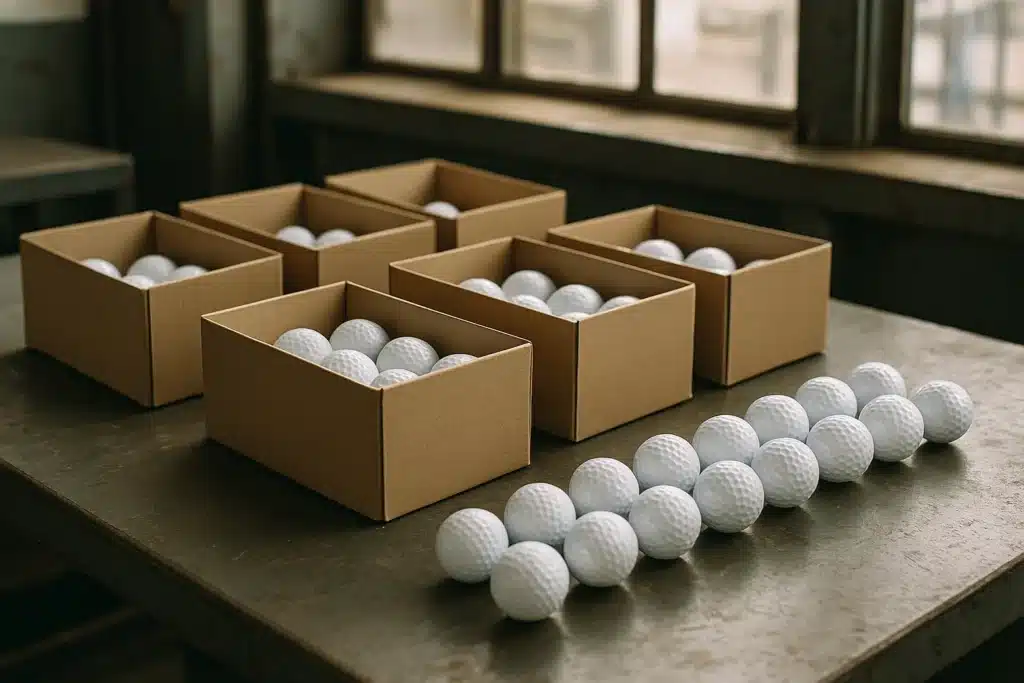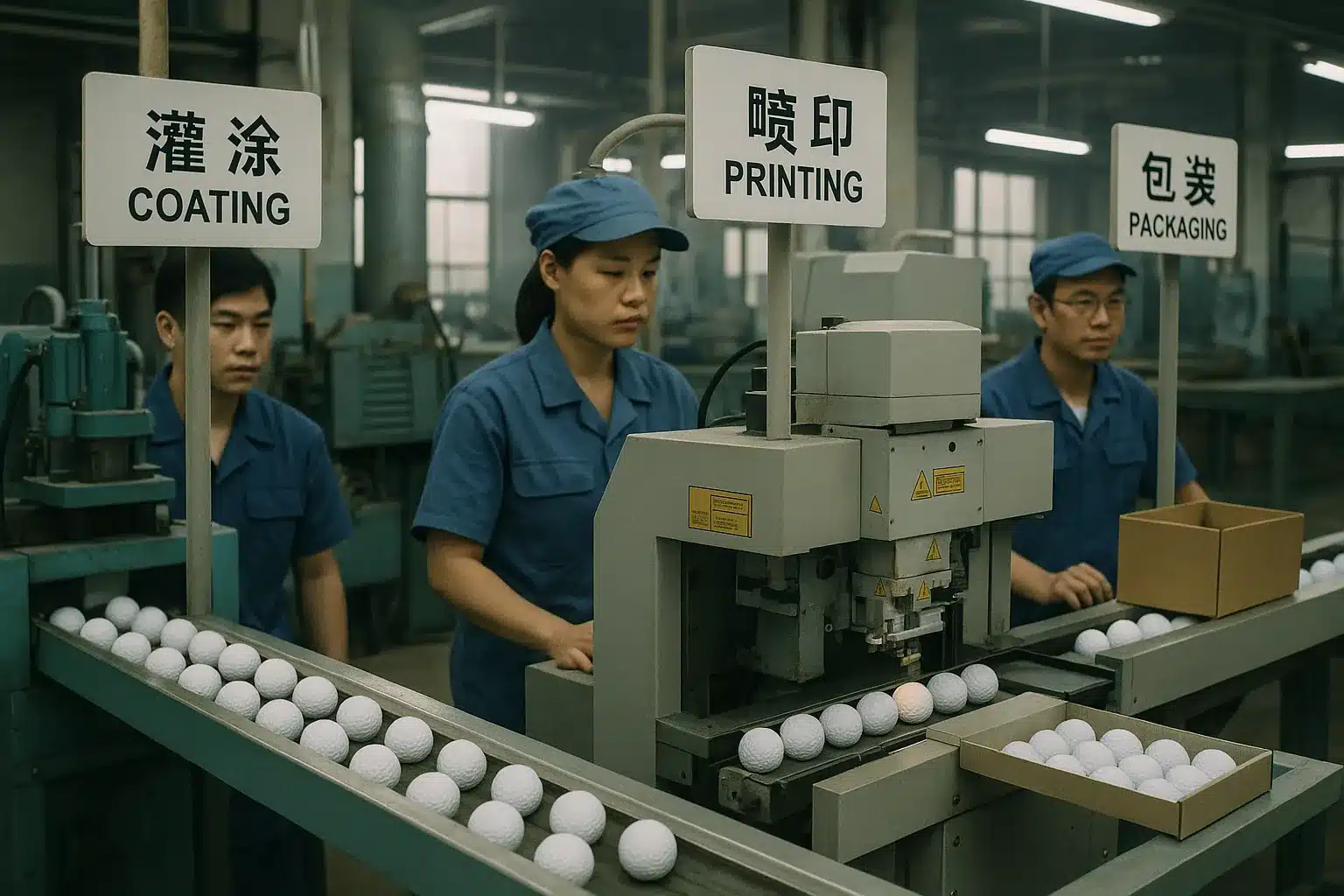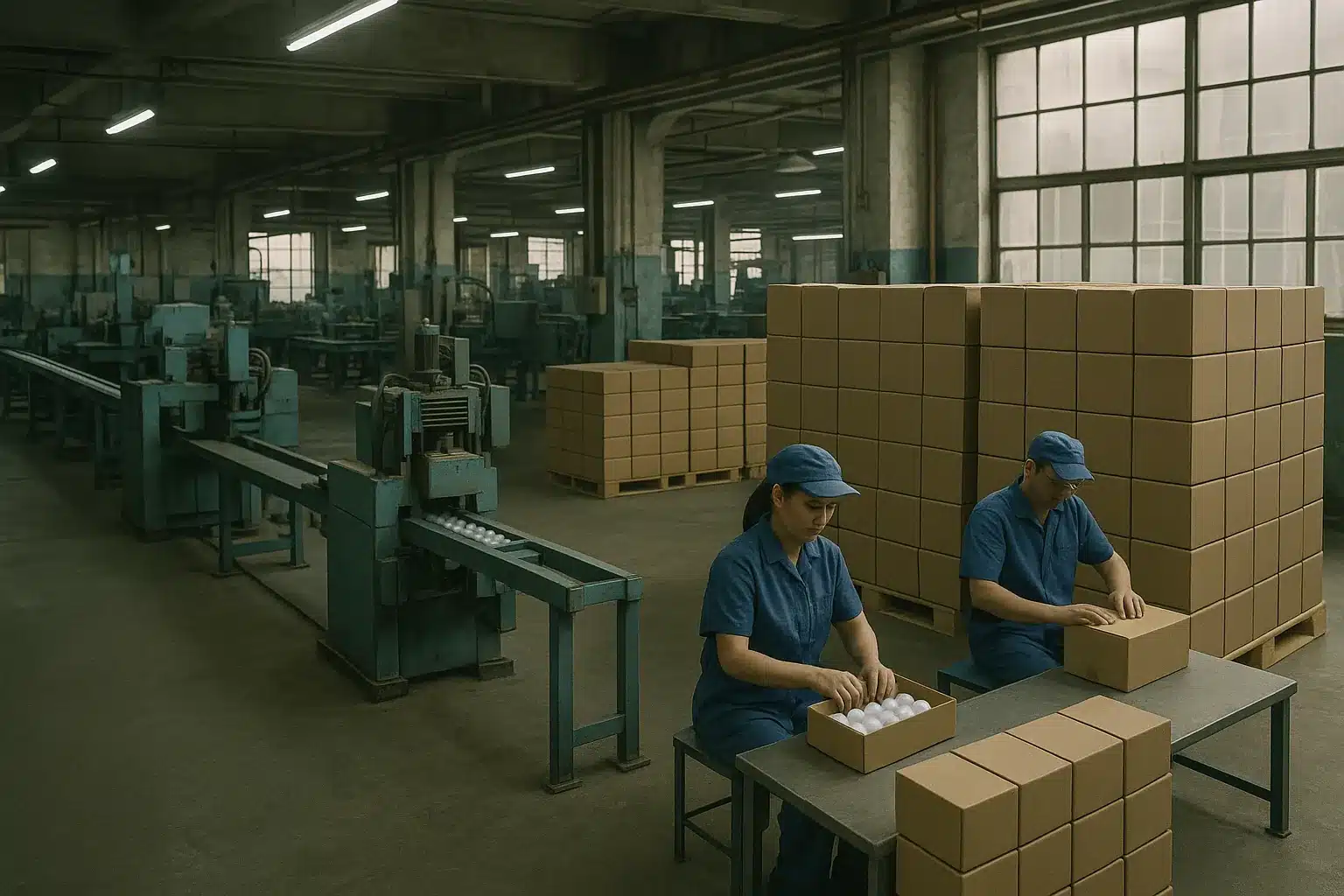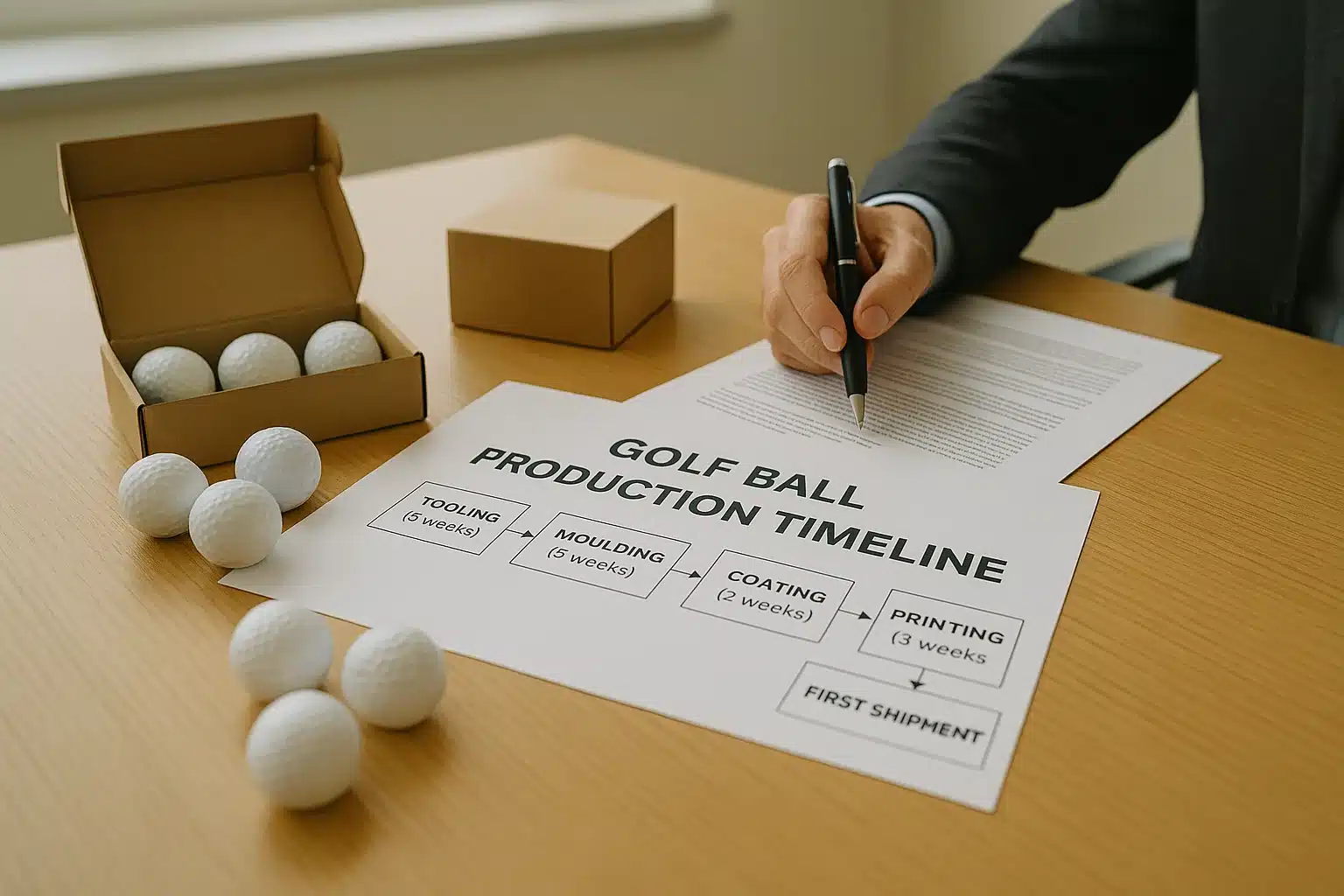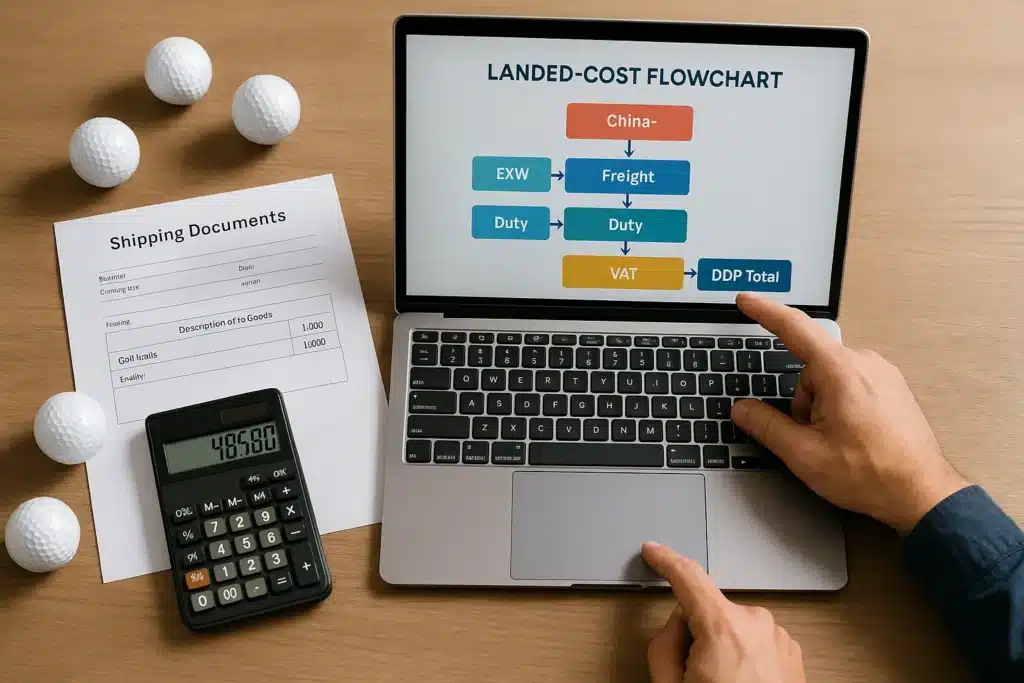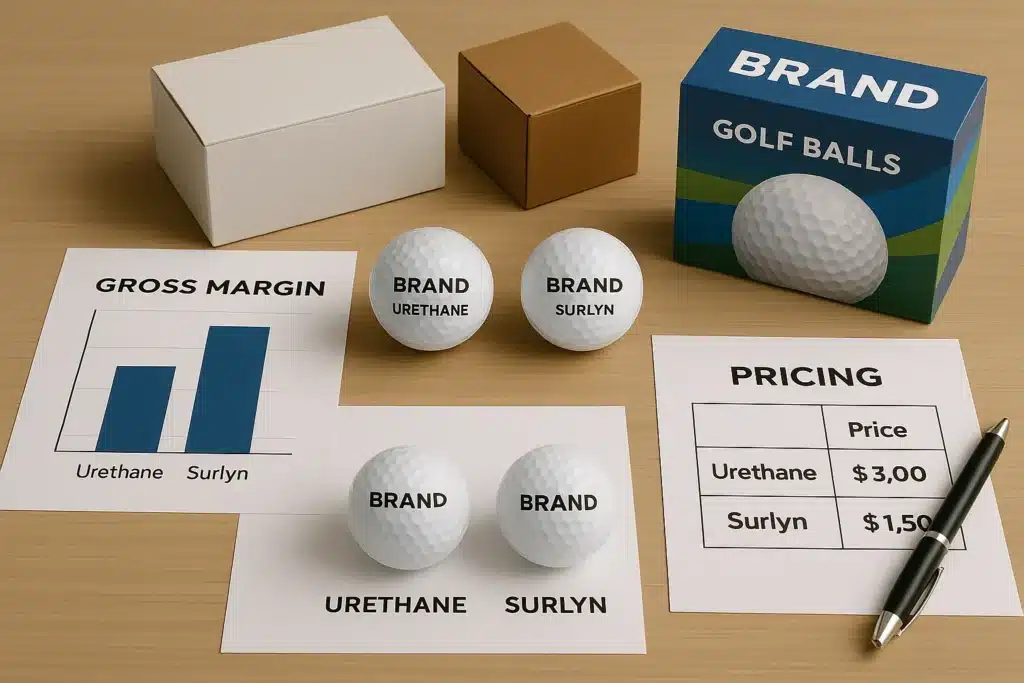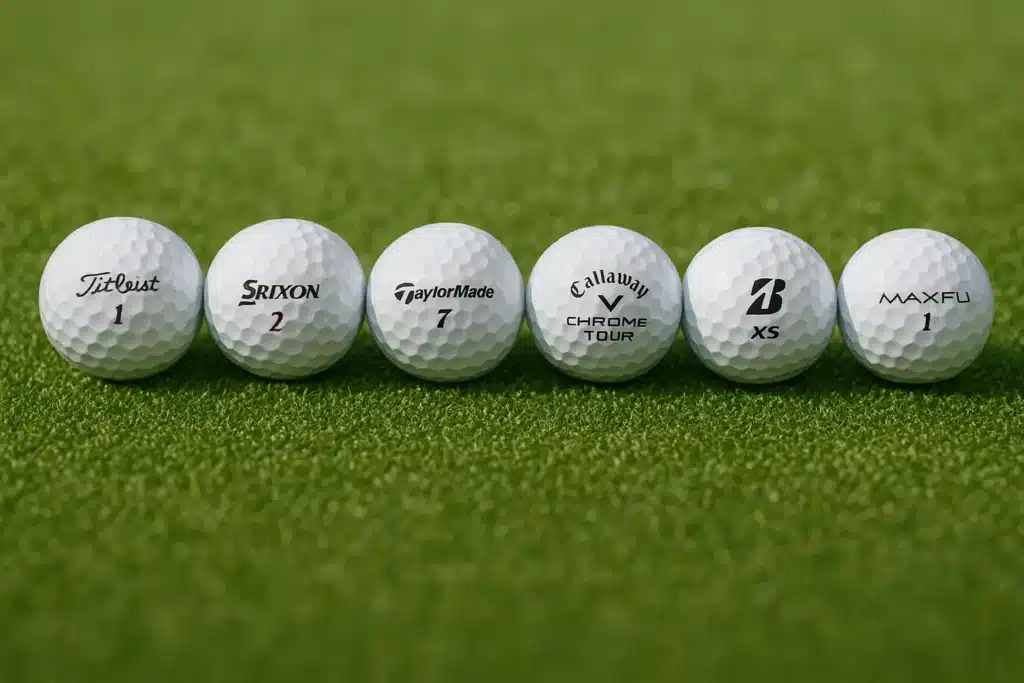When a new inquiry lands in my inbox, nine out of ten buyers ask the same thing: “What’s your custom MOQ?” It’s a fair question, especially for a test run when you don’t want pallets of inventory sitting in a warehouse. I run a China-based golf ball factory, so I see both sides—our setup costs and your launch risks. This guide shows how to negotiate MOQ with Chinese golf ball manufacturers without breaking unit economics.
How to negotiate MOQ with Chinese golf ball manufacturers:
-
Use existing molds
-
Choose white balls + generic boxes
-
Order in October–December or post–Chinese New Year
-
Offer higher prepayment or split shipments
-
Lock latest pickup dates and cap deposit
Outcome: Target MOQ for pilots: 1,000–3,000 pcs.
What Is MOQ and Why It Often Feels “Rigid”
MOQ is the minimum run that offsets setup and cash-flow risk across compounding, coating, printing and packaging; it’s a cost threshold—not a sales policy—so it feels rigid unless you reduce customization or batch with existing production.
✔ True — “MOQ is driven by setup, switching losses, and cash-flow risk”
Fixed setup includes compound mixing, coating line start-up, printing plate/ink setup, and box printing; switching losses cover color/ink purges, scrap, and idle time; finance risk stems from inventory and receivables if pickup is late or canceled.
✘ False — “MOQ is just a sales policy that disappears if a factory is hungry”
Physical batching and print minimums remain even in slow seasons; to lower MOQ you must reduce customization or batch with existing production, not only haggle on price.
Table — Golf Ball Process vs MOQ Drivers
| Process step | Typical fixed cost driver | MOQ impact | Negotiation levers |
|---|---|---|---|
| Core compounding | Batch size / material prep | High | Use existing recipe; join a running batch |
| Cover coating | Line setup & cure cycles | Medium–High | Standard colors/finish |
| Logo printing | Plate/setup & color swaps | Medium | Fewer colors; standard positions |
| Packaging | Box knife/print minimums | Medium | Generic box; white ball + label |
✔ True — “Reducing customization reduces MOQ”
Fewer unique plates, inks, and box prints mean fewer resets and less scrap. Using existing molds, standard logo positions, and generic cartons cuts print minimums and enables smaller runs.
✘ False — “MOQ is just a sales policy”
Every process has a physical start-up cost; tiny batches spike ink purges, scrap, and idle time. MOQ protects against changeover losses and unpaid inventory—it doesn’t vanish through pricing pressure alone.
Practical note: When you ask for a lower MOQ, show you understand the cost wall. If you say, “I can use your existing mold and a standard white ball,” your request sounds like a solution, not a squeeze.
Typical MOQ Ranges in China
Big plants run 50,000–100,000 balls per SKU; SMEs typically accept 5,000–10,000; with existing molds, white balls and generic boxes, well-framed pilots can achieve 1,000–3,000.
✔ True — “Lower MOQ usually raises unit price by 10–30%”
Fixed setup and changeover costs are amortized over fewer units, so per-unit economics worsen until volumes scale back toward 5k–10k baselines.
✘ False — “100% prepay guarantees a cheaper unit price”
Prepayment lowers MOQ by removing receivable risk, but setup costs remain; unit price normalizes mainly with higher volume, not payment terms alone.
Table — Factory Type vs Negotiability
| Factory type | Typical MOQ | Negotiation elasticity | Best for |
|---|---|---|---|
| Tier-1 / foreign-invested | 50k–100k | Low | Large, stable programs |
| Tier-2 OEM/ODM (SME) | 5k–10k | Medium–High | Private label, regional brands |
| Low-custom trial (existing molds + generic pack) | 1k–3k | High | Market testing / DTC launch |
✔ True — “White ball + generic packaging unlocks the lowest MOQ”
Removing custom print plates and special cartons eliminates two minimums at once, so factories can run smaller batches with existing setups.
✘ False — “Big brands’ own factories will do 1k pilots”
Tier-1 plants plan for long, high-utilization runs; 1k trials disrupt schedules and rarely meet their internal economics.
Tip for emails: When you state your target MOQ, anchor low but realistic. For example: “I’m testing 1–2k as a pilot using your existing 3-piece spec, white ball, standard box, single-color logo. If that works well, I’ll expand.”
Six Real-World Tactics to Reduce MOQ
Lower MOQ by reducing customization, ordering in off-season, offering prepayment, using existing molds, splitting shipments with factory storage, and—if cash is tight—joining a running batch.
Use Existing Molds / Formulation
Using a factory’s existing core/cover spec removes tooling and changeover cost, often enabling 1,000–3,000-unit pilots with limited customization.
-
What I’ll do: Run my current core/cover spec; no new tooling; compatible topcoat.
-
Outcome I’ve given buyers: MOQ down to 1,000–3,000 when SKU is close to a running standard.
-
Trade-off: Limited exclusivity; fewer tuning tweaks on compression or cover blend.
Mini-Checklist (Buyer Actions)
-
Ask for the closest in-house spec and its compression range.
-
Confirm dimple pattern and finish options available without new tooling.
-
Align on logo position/size that fits existing jigs.
Reduce Customization Depth (White Ball / Label, Generic Carton)
White balls, single-color logo and a generic carton eliminate print minimums and plate changes, typically pushing MOQ down to 1,000–2,000 for tests.
-
What I’ll do: White balls, standard box, label or heat-transfer logo.
-
Outcome: 1,000–2,000 pieces often achievable; this is the lowest total landed cost for a test.
-
Trade-off: Weaker on-shelf differentiation; limited special effects finishing.
✔ True — “White ball + label cuts two minimums at once”
Using white balls with a label (or heat-transfer) removes custom print-plate and special box print minimums, enabling smaller batches on existing setups.
✘ False — “Generic cartons always harm brand image”
For DTC and online launches, brand perception leans more on content, reviews, and simple unboxing; early-stage generic cartons seldom hurt conversion if core branding is strong.
Split Shipments / Factory Storage
Produce once for efficiency, then take partial deliveries; expect 30–50% deposit, a 3–6-month latest pickup, and possible 0.5–1% per month storage fee.
-
How it works: I produce the full MOQ once to keep efficiency; you take partials over time.
-
Typical terms I use: 30–50% deposit; latest pickup 3–6 months; possible storage fee 0.5–1%/month (or built into unit price).
-
Watchouts: Fix the pickup deadline and fee logic in the contract so there’s no surprise at month four.
Table — Split Shipments: Terms & Risks
| Item | Typical setting | Buyer upside | Buyer risk | Control lever |
|---|---|---|---|---|
| Deposit | 30–50% | Slot secured | Cash tied early | Link to milestones |
| Latest pickup | 3–6 months | Inventory smoothing | Forced pickup during slow sales | Clear calendar in contract |
| Storage fee | 0.5–1%/month | Transparent cost | Cost creep if demand dips | Cap at a ceiling or bake into price |
| payment milestones | 70% before each partial | No big lump at the end | More transfers | Bundle invoices monthly |
✔ True — “Split shipments are common for SMEs”
They keep lines busy and improve cash flow; typical terms include a 30–50% deposit and a latest pickup within 3–6 months, sometimes with a 0.5–1%/month storage fee.
✘ False — “Factories will store indefinitely”
Warehouse space is finite; beyond agreed windows pressure builds to clear stock. Set a latest pickup date and a clear fee structure in the contract to avoid surprises.
Off-Season Timing (Best: Oct–Dec; Second-Best: post-CNY Feb–Mar)
Order in Oct–Dec or post-CNY (Feb–Mar) when capacity slack is highest; MOQ concessions are easier than in peak months.
Table — Annual Rhythm vs Negotiation Difficulty
| Period | Factory status | MOQ negotiation difficulty | Suggested buyer action |
|---|---|---|---|
| Jan–Mar | CNY disruption + early export rush | High | Sample only; line up specs |
| Apr–Jun | Export peak (US/EU summer) | Very high | Focus on lead time, not MOQ |
| Jul–Sep | Ongoing peak (replenishment) | High | Prep for off-season PO |
| Oct–Dec | Off-season | Low | Place PO; negotiate MOQ/terms |
✔ True — “Timing can be a bigger lever than haggling”
Off-season lowers a factory’s opportunity cost and cash-flow pressure, so concessions on MOQ and terms are easier than during peak production.
✘ False — “A premium price in peak season guarantees low MOQ”
In peak months the bottleneck is capacity, not price; high utilization means lines prioritize on-time throughput, so MOQ flexibility is limited.
Offer Cash-Flow Advantage (100% or Higher Prepayment)
100% prepayment removes receivable risk, so factories can lower MOQ by 30–70%; protect yourself by vetting suppliers and capping the first fully prepaid order value.
How to vet (my detailed guide): See How to Source OEM Golf Balls from China: Specs, MOQ & Lead Time for a practical due-diligence workflow.
Table — Payment Term vs Factory Concessions
| Payment term | Likely MOQ movement | Unit price impact | Buyer risk | Typical use case |
|---|---|---|---|---|
| 30%/70% standard | Baseline MOQ (3k–10k) | None | Low–Medium | Regular orders |
| 50% deposit + split shipments | Moderate lower MOQ | Small ↑ | Medium | Cash-managed scaling |
| 100% prepay | 30–70% lower MOQ | Price not guaranteed ↓ | High | Test runs, faster slot |
| Trader buys in full | Very low MOQ (few hundred) | High | Medium | Micro launches |
✔ True — “100% prepay buys MOQ flexibility”
Prepayment removes receivable risk and secures materials, so factories can accept smaller batches and earlier slots.
✘ False — “100% prepay automatically slashes unit price”
Setup and changeover costs remain; unit price typically normalizes with higher volume, not payment terms alone.
Contract add-ons I suggest
-
Delivery SLA with penalties tied to clear stages.
-
Cure period for minor slippage, then escalating remedies.
-
Pre-shipment inspection clause with AQL standard and retest process.
Join a Running Batch (Piggyback)
Joining a scheduled batch shares setup costs and can reduce MOQ to 500–1,000—often the most practical way to negotiate MOQ with Chinese golf ball manufacturers on a tight budget.
-
How it works: I group similar SKUs to minimize changeovers; you pay your portion only.
-
Outcome I’ve given: 500–1,000 pieces when your spec aligns with a planned run.
-
Limits: Less flexible logo/pack; timing depends on batch windows; sometimes only color or size can change.
Table — Piggyback Readiness Checklist
| Item | Why it matters | What to agree |
|---|---|---|
| Spec proximity | Avoids new compounding/printing plates | Accept nearest in-house spec |
| Logo constraints | Reduces plate swaps | Single color; fixed position |
| Timing window | Keeps line continuity | Accept a date range vs a fixed day |
| Confidentiality | Protects your brand | No cross-exposure of designs |
Useful phrases to ask
- “Do you have similar orders in production that I can join to reduce MOQ?”
- “If I align with your standard 3-piece white ball and your carton, what’s the lowest slot you can offer next month?”
Price vs MOQ: Why Smaller Runs Cost More
Smaller MOQs raise unit cost because fixed setup and scrap amortize over fewer units; a 10–30% premium is typical and buys speed, learning and inventory control.
✔ True — “Small runs are a learning tax”
You pay more per piece but buy information faster—early feedback on specs, packaging, and sell-through can justify a higher unit cost at the pilot stage.
✘ False — “The factory is overcharging on small MOQs”
Setup scrap and changeover time must be amortized over fewer units in tiny batches; the premium reflects physics and fixed costs, not simple price padding.
Table — Example Impact of MOQ on Unit Economics
| MOQ tier | Typical unit price delta | Cash tied up | Best for |
|---|---|---|---|
| 1k | +25–30% | Low | Market test |
| 3k | +10–15% | Medium | First season |
| 10k | Baseline | Higher | Scale / retailers |
Scenario math (illustrative)
-
If setup loss equals 300 balls and you only order 1,000, that loss is 30% of your volume.
-
At 10,000, it’s 3%. You can see why unit price normalizes at higher MOQs.
In short: Pay a premium only when it buys learning and speed. Once specs are stable, scale to 5k–10k to normalize unit economics.
Timeline & Workflow: From Sample to First Delivery
Sample in Jul–Sep, place the PO in Oct–Dec, finish production before peak, and schedule split shipments; avoid QC or shipping windows around Chinese New Year.
Table — Milestones I Recommend
| Milestone | Window | Goal |
|---|---|---|
| Spec alignment & samples | Jul–Sep | Lock core/cover, logo positions |
| Off-season PO placement | Oct–Dec | Negotiate MOQ/terms |
| Production & QC | Nov–Feb | First batch ready |
| Split pickups | Dec–Jun | Match retail season |
✔ True — “Sampling early helps negotiation later”
Early samples remove spec uncertainty, let factories plan materials and capacity, and strengthen your position when asking for lower MOQs or faster slots.
✘ False — “Waiting until April saves time”
April is peak production for summer deliveries; capacity is tight and flexibility drops, so MOQ concessions and lead times are harder to secure.
Buyer planning notes
-
Build artwork and Pantone approvals in the sample phase.
-
Pre-book inspection slots in Nov–Jan when inspectors are busy.
-
Share your retail launch month; we can back-schedule pickups.
Contract & Risk Management
Write in latest pickup date, storage fee, delivery penalties, QC/AQL, and payment milestones; clear clauses make smaller MOQs feasible.
Table — Clause → Purpose → Notes
| Clause | Purpose | Notes / common pitfalls |
|---|---|---|
| Latest pickup date | Avoid inventory backlog | 3–6 months typical; define “month” precisely |
| Storage fee | Price transparency | 0.5–1%/month or baked in; clarify cap |
| Delivery penalty | On-time incentive | Tie to dated milestones; define cure period |
| QC standard & AQL | Quality clarity | Pre-ship inspection; rework window defined |
| Payment schedule | Cash discipline | Link payments to inspections or readiness |
| Confidentiality | Brand protection | Ban cross-use of artwork or photos |
✔ True — “Contract clarity lowers your effective MOQ”
When latest pickup dates, storage fees, QC/AQL, payment milestones, and delivery SLAs are explicit, risk is balanced—factories face less receivable and warehousing exposure and can accept smaller batches.
✘ False — “Penalties alone ensure on-time delivery”
Penalties work only when tied to dated milestones, material-readiness obligations, and a defined cure period; without that structure, they don’t secure throughput or lower MOQ.
Inspection workflow you can propose
-
Pre-book third-party QC with pass/fail tied to a release note.
-
Retest clause with capped days to fix.
-
Photo pack and serial samples archived for traceability.
Usage Advice: Single Tactic vs Combo
The strongest play is off-season ordering + existing molds + 100% prepay; if funds are tight, piggyback once, then scale to 5k–10k to normalize unit cost.
Table — What to Use, When
| Situation | My go-to combo | Why it works |
|---|---|---|
| Testing a new SKU | Existing molds + generic pack + 100% prepay | Lowest MOQ, fastest slot |
| Cash-constrained launch | Piggyback + generic pack | MOQ 500–1,000; fewer custom steps |
| Scaling after test | 50% deposit + split shipments | Smooth cash; stable supply |
| Retailer onboarding | 10k+ with full customization | Brand presence + baseline unit cost |
Playbook you can copy into your next email
-
“We can accept your existing 3-piece spec, white ball, standard box, single-color logo.”
-
“Target MOQ 1–2k for a pilot; we’ll scale after performance.”
-
“Happy to prepay 100% for the pilot if we lock delivery milestones.”
-
“If a similar SKU is in production next month, we’re open to joining the batch.”
Extra Reference Tables You Can Reuse in Calls
Use these tables to choose levers, quantify trade-offs, and set realistic guardrails.
Table — Negotiation Lever vs Impact vs Practical Limits
| Lever | MOQ impact | Unit price effect | Practical limit | Best timing |
|---|---|---|---|---|
| Existing mold/formula | High | Neutral to small ↑ | Less customization | Off-season |
| White ball + label | High | Neutral | Brand minimalism | Any |
| Generic carton | Medium | Neutral | Retail shelf presence | Online/DTC first |
| Split shipments | Medium | Small ↑ | Storage window | Off-season |
| 100% prepay | High | Price not guaranteed ↓ | Buyer risk ↑ | Off-season |
| Piggyback batch | Very High | Neutral to small ↑ | Spec rigidity | As available |
Table — Buyer Risk Matrix (choose your safeguards)
| Risk | Likelihood at low MOQ | Mitigation |
|---|---|---|
| Delayed pickup fees | Medium | Cap fee or bake into price; calendar in contract |
| Late delivery | Medium–High in peak | SLA, cure period, penalty |
| Quality variance | Medium | AQL inspection, retain samples |
| Cash exposure (prepay) | Medium–High | Supplier vetting; cap first order value |
| Brand leakage (piggyback) | Low–Medium | NDA; limit shared visuals |
FAQs
Can I negotiate MOQ down to 1,000 units?
Yes—use existing molds, white balls, generic boxes, and consider 100% prepay in Oct–Dec.
Does 100% prepay lower unit price?
Not automatically. It reduces MOQ by removing receivable risk; unit price normalizes mainly with higher volume.
What payment term balances risk and flexibility?
50% deposit plus split shipments often works best—smaller drops, manageable cash exposure.
When should I place my PO / avoid CNY issues?
Best in Oct–Dec; second-best post-CNY (Feb–Mar). Avoid final QC/shipping two weeks around Chinese New Year.
What’s a realistic lead time for a 1–3k pilot?
About 30–45 days after deposit and artwork approval; longer near CNY.
Can I get as low as 500 pcs?
Sometimes via piggybacking a running batch or through a trader—expect tighter specs and higher pricing.
Can I mix colors or number sets within one run?
Usually within limits (e.g., 50/50 white/yellow); too many variants trigger extra changeovers.
What storage fee and window apply to split shipments?
Commonly 0.5–1%/month with a latest pickup in 3–6 months—define both in the PO.
What unit-price premium should I expect at low MOQs?
Typically +10–30% versus 10k baselines—you’re buying speed, learning, and lower inventory risk.
Key Takeaway
To negotiate MOQ with Chinese golf ball manufacturers, trim customization, time your PO for Oct–Dec, and trade cash-flow safety for flexibility. Start with 1,000 – 3,000 pcs trials using existing molds and generic packs, validate performance, then scale volume to reclaim unit cost. If cash is tight, piggyback once, learn fast, and move on to your own run.
Since 2012, Golfara has manufactured and exported a full range of golf balls in China—from range models to game and tour-spec constructions. If you’re considering sourcing golf balls from China, feel free to contact us. Whether or not you place an order with us, we’re happy to share practical, professional advice on specs, compliance, packaging, and landed-cost planning.
-
✅ Low MOQ: We are willing to start the business with trial orders.
-
🧪 Flexibility: We keep flexible and practical policies—everything is open to discussion.
-
⚙️ Expertise: You will work directly with an experienced and professional manufacturer.
-
🎨 Value: We offer moderate prices with a low-risk starting point.
-
💬 Response: ≤12 hours with full quote & roadmap.
You might also like — What golf balls are manufactured in China?

